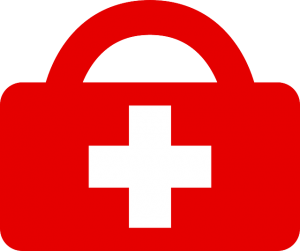 The worst thing about emergencies is that they are unpredictable. Earthquakes, hurricanes, and blizzards are just a few of the potentially catastrophic events that everyone should prepare for. A great way to be prepared is to compile an emergency kit. An emergency kit (or a disaster supplies kit) is a collection of basic items your household may need in the event of an emergency. For the especially cautious, it’s not a bad idea to keep one in your car, cabin, camper or boat – anywhere you spend a significant amount of time.
The worst thing about emergencies is that they are unpredictable. Earthquakes, hurricanes, and blizzards are just a few of the potentially catastrophic events that everyone should prepare for. A great way to be prepared is to compile an emergency kit. An emergency kit (or a disaster supplies kit) is a collection of basic items your household may need in the event of an emergency. For the especially cautious, it’s not a bad idea to keep one in your car, cabin, camper or boat – anywhere you spend a significant amount of time.
Think about what you would need to survive on your own for a few days. You should have supplies to last at least 72 hours. In the case of an emergency, there may not be food, water, gas, electricity or phones for a week or more.
For an emergency kit list, we looked to our friends at FEMA (Federal Emergency Management Agency). Their job is to help us all be prepared for emergencies.
Here’s what you will need for a basic emergency supply kit:
- Water, one gallon of water per person per day for at least three days, for drinking and sanitation
- Food, at least a three-day supply of non-perishable food
- Battery-powered or hand crank radio and a NOAA Weather Radio with tone alert and extra batteries for both
- Flashlight and extra batteries
- First aid kit
- Whistle to signal for help
- Dust mask to help filter contaminated air
- Plastic sheeting and duct tape to make a shelter
- Moist towelettes, garbage bags and plastic ties for sanitation
- Manual can opener for food
- Wrench or pliers to turn off utilities
- Local maps
- Cell phone with chargers, inverter or solar charger
If you have a pet, make sure to pack additional pet food and water. Prescription medications should be included as well as inhalers, allergy medications, and eye glasses.
Healthy Snacks for Emergencies
Think about foods that are nutritious and taste good at room temperature. Jerky is perfect for an emergency kit – it tastes great, is packed with protein and other nutrients, and will satisfy hunger. You could also consider nuts and protein bars, these are also nutrient dense foods.
Kit Expiration
Keep your kit in a cool, dry place like a pantry or garage. Check your kit every six months, change out the water and replace any expired foods or other supplies. During the winter months, or if you are in a cooler location, add additional blankets, cold weather clothes, and matches in a waterproof container.
Being safe is being smart, so put one of these kits together and feel good about being prepared!
Leave a Reply